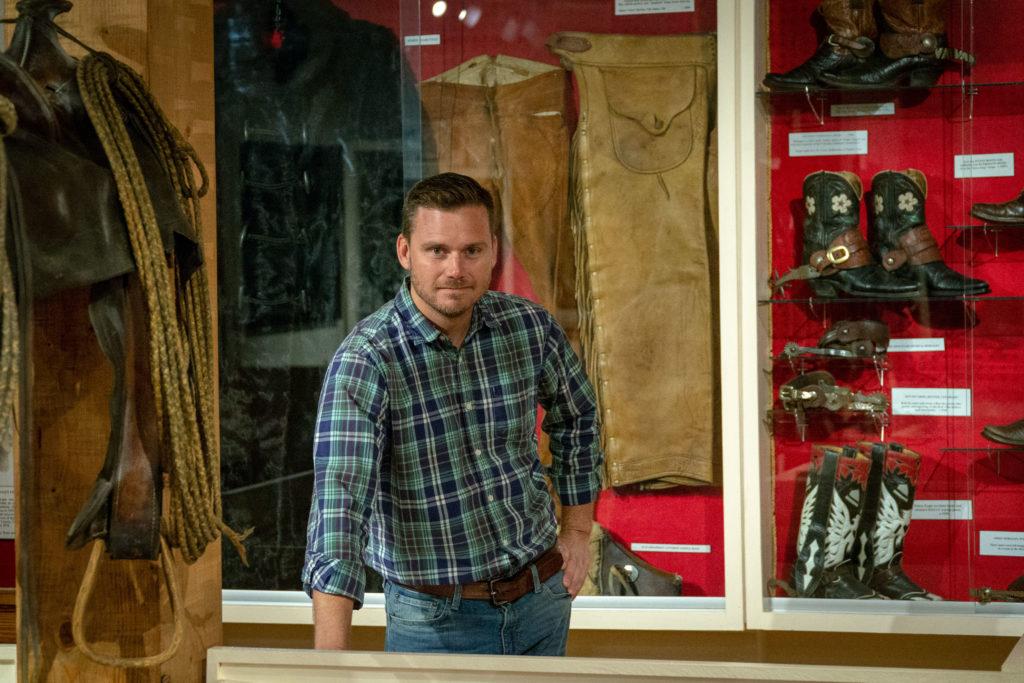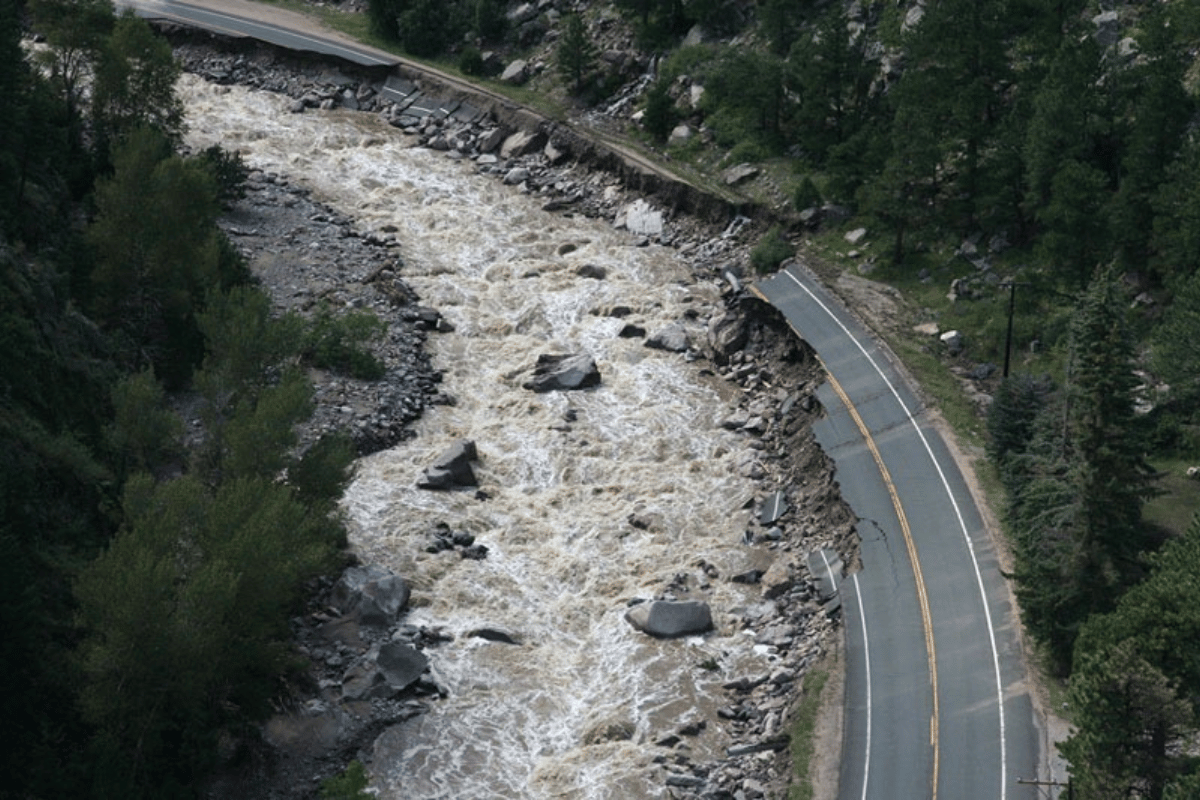
The Museum of Northwest Colorado in Craig is a trove of dinosaur fossils, Ute Indian artifacts, more than 70,000 historic photographs and memorabilia from the state’s gold rush days. The museum’s most prized possession is their “Cowboy and Gunfighter” collection.
“This is what we’re nationally known for,” said assistant director Paul Knowles of the 130 rare Old West firearms, old saddles and cases full of ornate bits and spurs. “It really is the full gamut of cowboy paraphernalia.”
There’s also the museum’s “Smithsonian-worthy type artifacts,” collectibles with ties to notable characters of the Old West, such as a hand-forged bullet mold owned by the “last true mountain man,” Jim Baker, and a pair of leather wrist cuffs worn by beloved black cowboy Isam Dart when he was killed by the infamous outlaw Tom Horn.
The museum is a priceless vault full of relics of Colorado’s past and it faces an uncertain future.
Moffat County has been the museum’s main source of funding for years, but for eight months, they haven’t received a dime from the county. Knowles said they’ve been operating on reserves.

“We have enough in there right now to get us through about June or July of next year,” he said. “Once we hit that point, then we're out of funds and it’s over.”
The museum would be forced to close when those reserves run out.
Funding for the museum from the county’s general fund was reduced by $100,000 for the 2018 county budget and eliminated in the 2019 budget. The county library system also took major financial blows — a 77 percent reduction from approximately $475,000 in 2018 to $113,901 for this year.
Public library service is protected by state law and statutorily the county is required to provide some funding.
When he took office in 2017, Moffat County Commissioner Ray Beck said he “inherited a financial mess.” They made policy changes to realign the budget and a number of departments took a hit.
“When you think about the overall big picture of Moffat County… you have to understand that we provide services, and [the museum and libraries] weren't at the top of the priority list,” Commissioner Beck said.
He listed off public services such as law enforcement, roads that need to be maintained, parks, social services, the housing authority and a total of 39 departments with nearly 200 employees.

“We don't want to see [the museum and libraries] go away,” Beck said. “But at the end of the day, you only have so much money and you can't fund everything in the economy that we're in right now.”
He said both the museum and libraries got advance warning about the “tough budgeting decisions.”
A citizen task force recommended a measure for the 2018 November midterms that asked voters to sign off on a 2.85 percent mill levy. The property tax hike would have provided about $1.2 million a year for the museum and libraries. Commissioners approved it for the ballot.
Craig resident and retired financial coordinator Jayne Mae Morley said the tax proposal was unfair and that residents she spoke with “felt that the library and museum were custom picked so that the tax would pass,” adding that a 1.75 city sales tax increase had already passed a couple of years ago.
“It was basically a ‘no’ message to our commissioners,” Morley said. “We wanted them to make better use of our tax dollars that they already had.”
Not long after the election, Morley went to the museum, wrote them a check and asked, “Now, what can we do as a community to make sure you’re funded?”
Since then, she’s attended county commissioner and Craig City Council meetings on the regular as a vocal reminder on the issue of funding the museum and libraries.

Artist and Craig resident Roberta Hawks — who voted for the mill levy — said the museum “tells us where we've been, how we've grown [and] changed as a community. The library tells us where we are and also where we can go. To eliminate those two very important entities in a small town would be more than tragic.”
The drastic cuts to the library system have affected its ability to “perform at full capacity,” said Keisha Bickford, interim director for Moffat County Libraries. The library has three branches: Dinosaur, Maybell and Craig. Bickford said the Craig branch went from “48 hours open to the public to about only 20 hours. We've been a minimal staff for quite a while now.”
Bickford has been talking with both the city of Craig and the county about keeping the libraries open.
“I'm hoping to help them understand the importance of the library, not just that every community has one and that they have to have one,” she said. “But down to the very fine detail of why it's important to our community and who utilizes it and what they utilize it for.”
About 80,000 people use Moffat County Libraries every year, Bickford said. But the “hard reality” is that the entire system could shut down by the end of 2020 if its funding predicament doesn’t change.
Under Colorado Revised Statutes 24-90-114, a public library may be “abolished only by vote of the registered electors in that library's legal service area.” Bickford said. But when it comes to looking at a full closure of Moffat County Libraries, there’s a lot of gray area and too many questions.

While some public libraries have shuttered in small Colorado towns, Crystal Schimpf, public library specialist with the Colorado State Library, said they have “not seen the full closure of a library system that has resulted in a loss of public library services for the entire county.” Therefore, if the three branches close, Moffat would be the only county in the state without any public library service.
Like the library, the museum has lobbied the city of Craig for support. Paul Knowles was at a recent city council meeting to give a presentation about the economic value of the Museum of Northwest Colorado. Prior to meeting, he told CPR News the museum helps “put Craig on the map.”
“We're shaking hands with people from around the world and kind of introducing them to [Craig, Colorado],” Knowles said of the museum’s roughly 12,000 yearly visitors, 6,300 of which come from outside of Moffat County.
Knowles sees the museum as playing a key role in an economy that needs to diversify after years of dependency on energy and coal.
Craig is weighing a “shot in the arm” for the museum and Craig library branch through additional sales and excise taxes on marijuana. That’s tricky though since there’s no legal pot in town. First voters will need to vote to allow the sale and cultivation of retail cannabis within city limits, then vote to tax it for the museum and library this November.
The council’s deadline to certify language for the marijuana-related ballot questions is Sept. 6.

At a recent city council meeting, Councilmember Brian MacKenzie worried about attaching funding to a tax proposal again. He asked the city to think about how to fund “these entities without having to deal with the marijuana resolution,” so residents don’t feel forced to vote on the pot resolutions and tax to keep their museum and library.
“I want to make sure that through our own budget that we can come up and say, ‘Yes, we're going to help support the county and we're going to help support the citizens of Craig by funding it through our own self,’” he said.
There’s still a long process ahead to finalize the city budget, and Moffat County is considering matching city contributions to the museum, something recommended by the joint budget services committee.
The perfect funding scenario for the museum, Knowles said, would be $300,000 total in public money annually. Gift shop sales are up and private donations are coming in. But the museum needs consistent funding to sustain itself, he said. Without that financial security, it’s difficult to attract planned giving or artifact bequests because donors are nervous to give to an organization that might not be around much longer.
Knowles has put off the bigger question of what happens to the museum’s well over 100,000 collectibles if it closes. It’s almost like a bad omen to even go down that road, and he’s optimistic the city, county and the community will figure something out.
“It's one of those things we try not to even think about until we hit that bridge,” he said.









